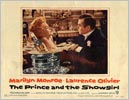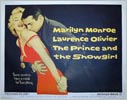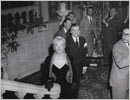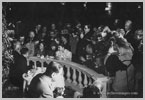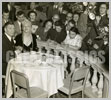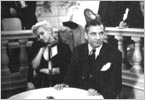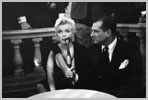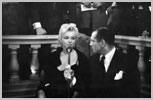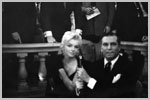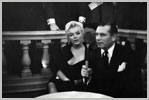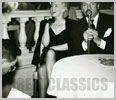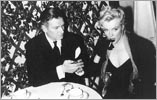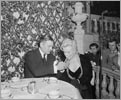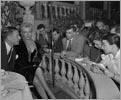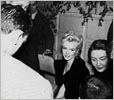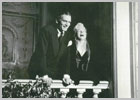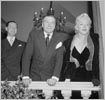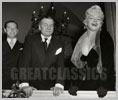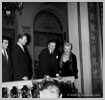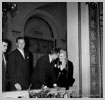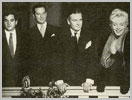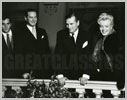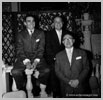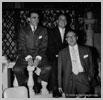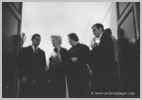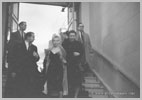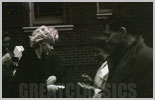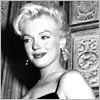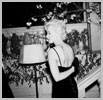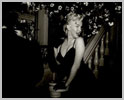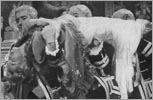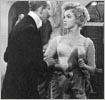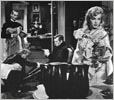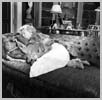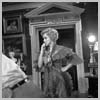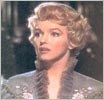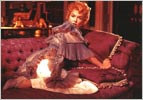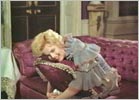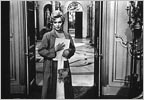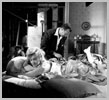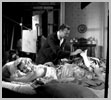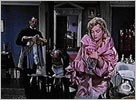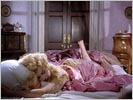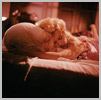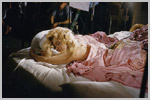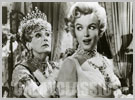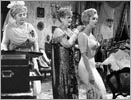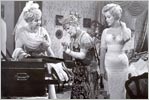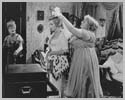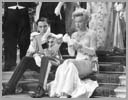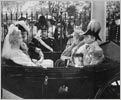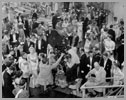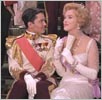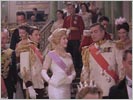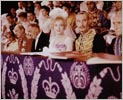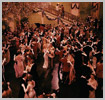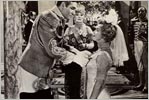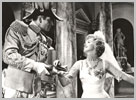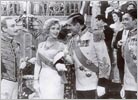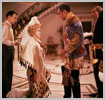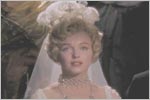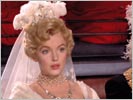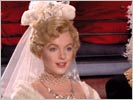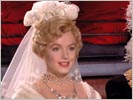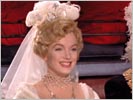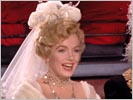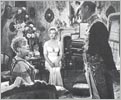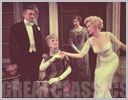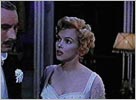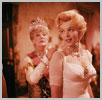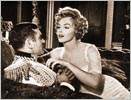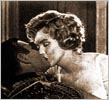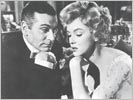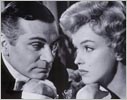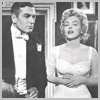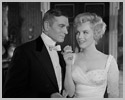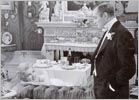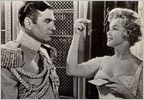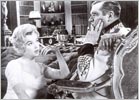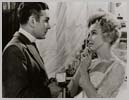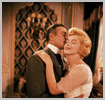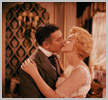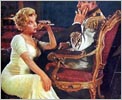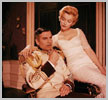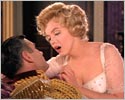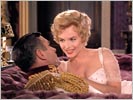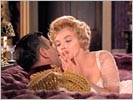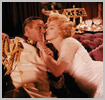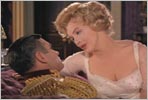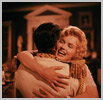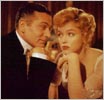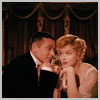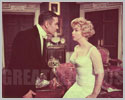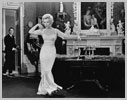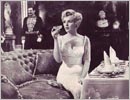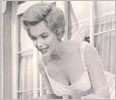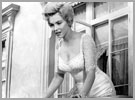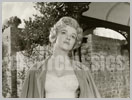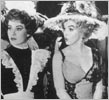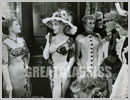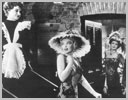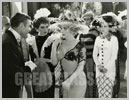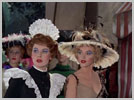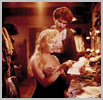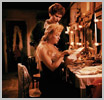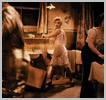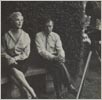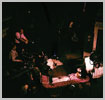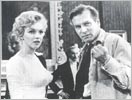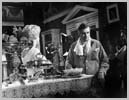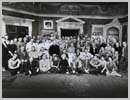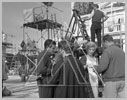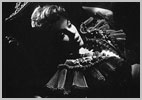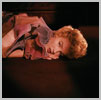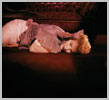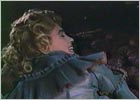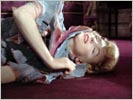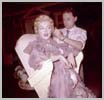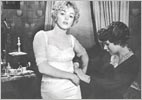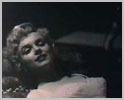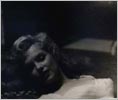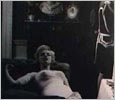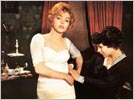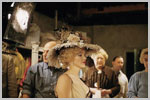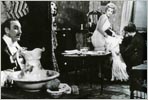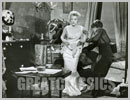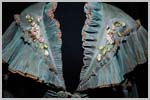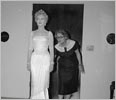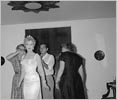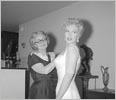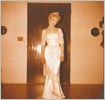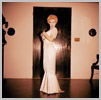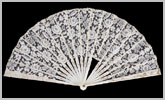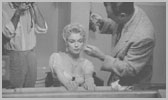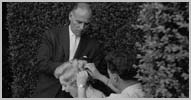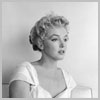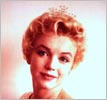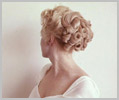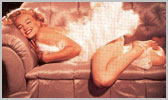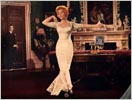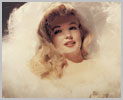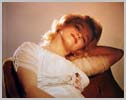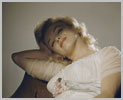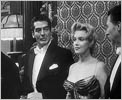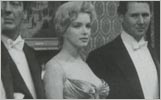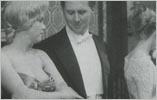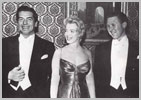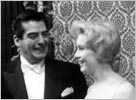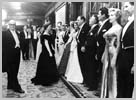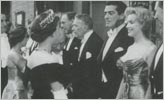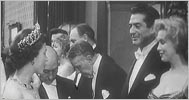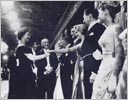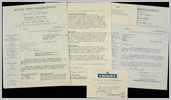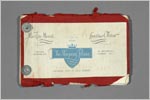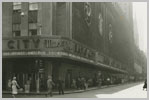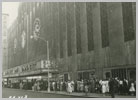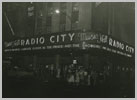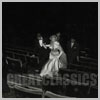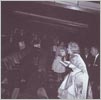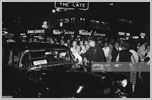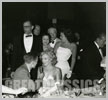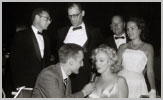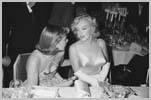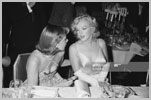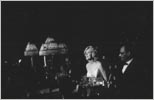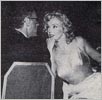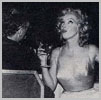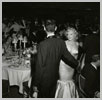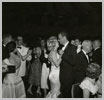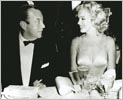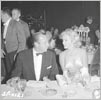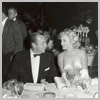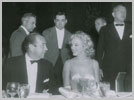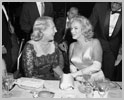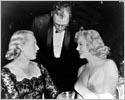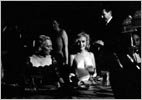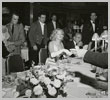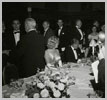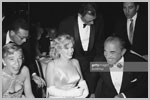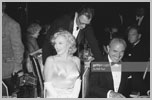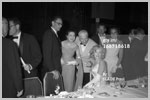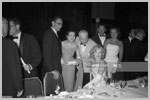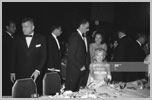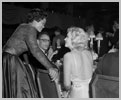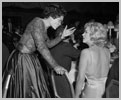
My journey ends here...
The Prince and the Showgirl (1957)
In this movie of British "making", the first (and the last) of the Marilyn Monroe Productions, there were upside down, on the screen as on the set.
Laurence Olivier
and his wife Vivien Leigh, had been the stars of the original version,
a play of Terence Rattigan untitled "The Sleeping Prince" (1953),
of which Marilyn's associate, Milton Greene, had purchased the rights.
In February 1956, Laurence Olivier, Vivien Leigh and Terence Rattigan went to New York City with Laurence Olivier's agent, Cecil Tennant, to discuss about the project's terms.
Marilyn had planned to purchase the rights of this work since 1954, on Hugh French's suggestion, his agent at that time. Laurence Olivier accepted to revive the part he had already played on stage, on condition that he directed himself the movie and had to be the producer.
On February 9, 1956, a press conference was organized at the Terrace Room of the Plaza Hotel to announce to the whole world this great movie wedding - the one of the best classic actor of England and the most seductress of Hollywood.
Interview
with jacket
without jacket
 ,
,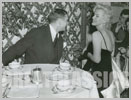 ,
,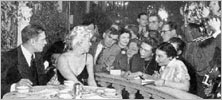 ,
,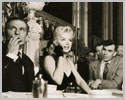 ,
,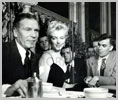 ,
, ,
,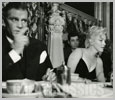 ,
,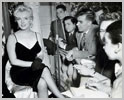 ,
,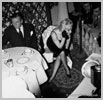 ,
,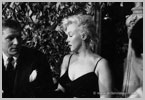 ,
, ,
,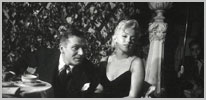 ,
,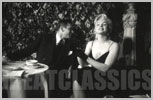 ,
,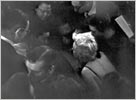 ,
, ,
, ,
,
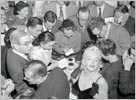 -
- ,
,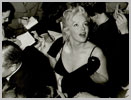 ,
,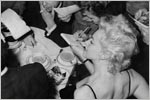
Balcony
Although she had denied any premeditation,
it's obvious that Marilyn perfectly orchestrated the event, stealing
the greatest living actor of the world's thunder, when she bent over
and one of her thin straps broke clean - a trick that the publicity
agents had taught her at her early stages at the Fox.
The photographers became crazy. Hastily someone provided her a safety pin, but the strap broke twice before the reporters and photographers, delighted with the incident, left the Plaza Hotel
This plan with a meticulous organization won Marilyn the headlines,
even if the press conference in itself was not much convivial, the
reporters having derode her "pretentiousness".
Marilyn and Arthur Miller arrived in England hardly several weeks after their wedding, and they saw themselves in the limelight.
The shooting began on August 7, 1956 at the Pinewood Studios after a week of rehearsals. The production ended on November 17, 1956.
The shooting couldn't have started worse : Marilyn, who finally got rid of the sexy roles she had been confined, and eagerly applied the introspection and the motivation search lauded by the Method, received from Laurence Olivier the instruction to "be sexy". In reprisal towards what she took for condescension, Marilyn used the tested tactic : lateness and absences.
According to Jack Cardiff, the director of photography, the issues between Laurence Olivier and Marilyn cropped up because they had different approaches of acting.
In the middle of the shooting, Marilyn's psychoanalyst, Dr Margaret
Hohenberg, rushed up in London to help her patient.
The tensions soon reached their climax. Laurence Olivier thought that Marilyn was touchy, and he couldn't stand what he considered as interference from Paula Strasberg; Paula often acted as a go-between, between Marilyn and him, puting the information about the two stars of the movie, who didn't talk to each other any more.
Milton Greene didn't trust Arthur Miller, and Marilyn, according to what was said, had started the shooting prey to suspicions, after having read in her husband's diary a passage which had destroyed her trust in him. In spite of the frictions and rumors, the movie didn't exceed the budget, and it needed only 2 days to do some scenes again.
Even after the shooting, the arguments continued. At that time, Marilyn had fell out with Milton Greene, convinced that, behind her back, he had carried out new cuts in the movie. She wrote a long letter to Jack Warner to break the news, and did her best so that Greene wouldn't be credited as executive producer, a point on which they had agreed at the beginning.
The premiere of the movie took place at the Radio City Music Hall, New
York City, on June 13, 1957.
The critics made it a rather half-hearted welcome, but they admitted that it was one of Marilyn's best performance, easily stealing Laurence Olivier'ss thunder.
It was also the first movie for which her status of independent contracting party entitled her a percentage on the profits, kind of an unusual way of earnings at the time of the studios all-powerful system. Marilyn earned 10% of the profit, ie 160 000$ (the movie having generated 1.6 million $ takings).
Production
coat
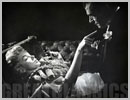 ;
; ,
, -
- ,
, ,
,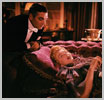 ,
,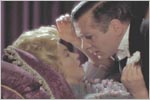 ,
,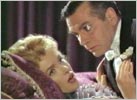 ,
,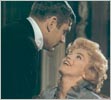 ,
,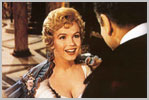
bathrobe
bed
wedding
white dress
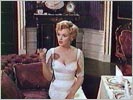 ,
, ,
,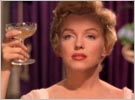 ,
, ,
, ,
,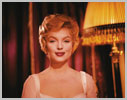 ,
,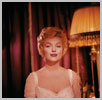 ,
, ;
; ,
, ;
; ,
, ,
, ,
,
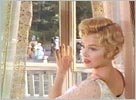 ,
,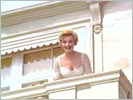 ,
,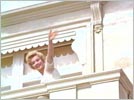 ,
,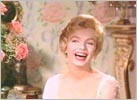 ;
;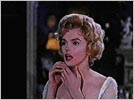 ,
,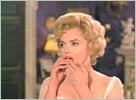 ,
,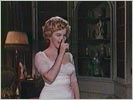 ,
,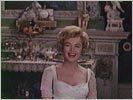 ;
; ;
; ;
;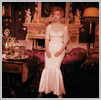 ;
;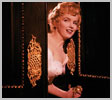 ;
;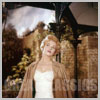 ,
,
lace dress
underwear
Off set
with the crew
alone
Wardrobe tests
White dress
Lace dress
Hairdressing
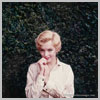 ,
, ,
,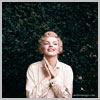 -
- ,
,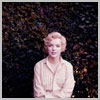 (plus de photos ici)
(plus de photos ici)
Publicity pictures
Meeting the Queen of England, on October 29, 1956
CREDIT
Laurence Olivier and Marilyn Monroe
Productions, distributed by Warner Brothers, Technicolor.
Runtime : 117 mn
Release date : June 13, 1957.
Pictures of the premiere
arriving
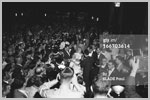 -
-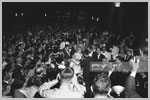 ,
,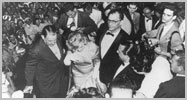 ,
,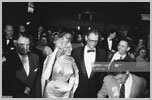 ,
,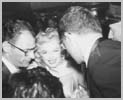 ;
; ,
, ,
, ,
, ,
,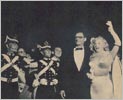 ,
, -
- ,
,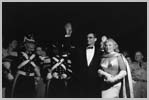 ,
,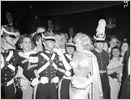 -
-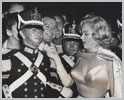 ,
, ,
, ,
,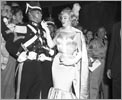 ,
, ,
, -
- -
- ,
,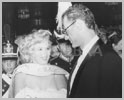 ,
,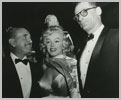 -
-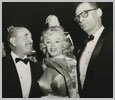 ,
,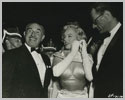 ;
; ,
, ,
,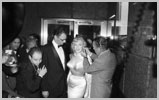 ,
,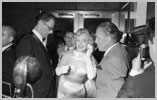 ,
,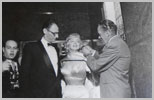 ,
,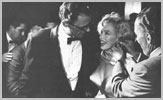 ,
, ,
,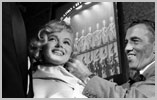 ,
, ,
,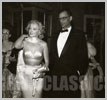 ,
,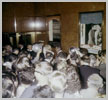 ;
;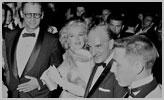 -
-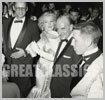 ,
,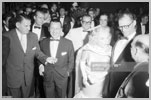 ,
,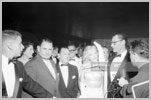 ,
,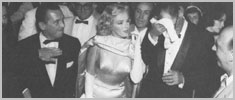 -
-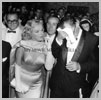 ,
,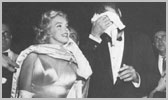
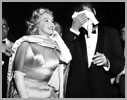
at the Radio City Music Hall
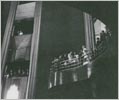
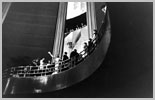
dinner at the Waldorf-Astoria
alone
with Arthur Miller
at the table
Summary of cost, May 26, 1957  ,
, ,
, ,
, ,
,
Director : Laurence Olivier
Producer : Laurence Olivier
Screenplay : Terence Rattigan (author of the original play "The Sleeping Prince")
Executive producer : Milton
Greene
Director of photography :
Jack Cardiff
Music :
Richard Addinsell
Film editing :
Jack Harris
CAST
Laurence
Olivier - Charles, the Prince Regent
Marilyn
Monroe - Elsie Marina
Sybil
Thorndike - the Queen Dowager
Jeremy
Spenser - King Nicholas
Richard
Wattis - Northbrooke
Jean Kent -
Masie Springfield
Esmond
Knight - Colonel Hoffman
Daphne
Anderson - Fanny
Vera Day -
Betty
Paul Hardwick - major Domo
Andrea Malandrinos - valet with violin
Margot
Lister - Lottie
Rosamund
Greenwood - Maud
Audrey
Dexter - the Ambassador
Maxine
Audley - Lady Sunningdale
Harold Goodwin - call boy
Gillian
Owen - Maggie
Charles
Victor
David Horne
Dennis
Edwards
Gladys Henson.
TECHNICAL CREW
Beatrice "Bumble" Dawson - ladies costumes
William Chappell - dance arranger
Carmen Dillon - art direction
Gordon K. McCallum - sound recordist.
SYNOPSIS
London, 1911. The prince regent of Carpatha,
Grandduke
Charles (Laurence Olivier), arrives in town for the George
V coronation, accompanied with his young son, future King
Nicolas (Jeremy Spenser), and his mother-in-law, Queen Dowager
(Sybil Thorndike).
After having ssen the music-hall American
dancer Elsie
Marina (Marilyn Monroe) performing, the prince invites her, in the
opulent ambassy of Carpatha, counting on a small love interest.
The pragmatic Elsie manages to save her virtue, although she was drunk and ended by being asleep. During the evening, a poilitical crisis happens : Nicholas, who has plotted to reach the power without waiting for his majority, 18 months later, is locked in his father's room.
Despite her humble origins, Elsie receives the approval of the austere Queen Dowager, who made her a lady-in-waiting for the coronation ceremony. For Elsie, it's the ideal opportunity to bring back together the father and the son. Finally, she convinces young Nicholas to bide his time.
The prince, who is now really in love with Elsie, plans to go back to his coutry with her and to marry her.
BIBLIOGRAPHY
"The Prince, the Showgirl and Me", Colin Clark, London, HarperCollins, 1995.
"Une
semaine avec Marilyn", Colin Clark, Editions Payot, 2000.
AWARDS
- Crystal Star (France) : Best Foreign Actress in 1958, Marilyn Monroe
- David di Donatello (Italy) : Best Foreign Actress, Marilyn Monroe.
NOMINATIONS
At the British Academy Awards
- Best Foreign Actress : Marilyn Monroe
- Best British Actor : Laurence Olivier
- Best British Film
- Best British Screenplay : Terence Rattigan
- Best Film.

